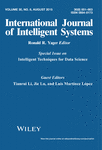Travel Demand Forecasting Using Activity-Based Modeling Framework FEATHERS: An Extension
Abstract
Activity-based travel demand modeling is the approach with most relation and need for intelligent solutions as it directly aims at reproducing human decision making in daily life. Therefore, the way to implement the selected intelligent solution plays an important role in the successful application of the models. FEATHERS (the Forecasting 16 Evolutionary Activity-Travel of Households and their Environmental RepercussionS) is an activity-based microsimulation modeling framework used for transport demand forecasting. Currently, this framework is implemented for the Flanders region of Belgium and the most detailed travel demand data can be obtained at the Subzone level, which consists of 2,386 virtual units with an average area of 5.8 km2. For the sake of more detailed travel demand forecasting, we investigated in this study the extension of the FEATHERS framework from the Subzone zoning system to a more disaggregated zoning system, i.e., Building block (BB), which is the most detailed geographical level currently applicable in Belgium consisting of 10,521 units with an average area of 1.3 km2. In this paper, we elaborated the data processing procedure to implement the FEATHERS framework under the BB zoning system. The observed as well as the predicted travel demand in Flanders based on the two zoning systems was compared. The extended modeling system was further applied to investigate the potential impact of light rail initiatives on travel demand at a local network in Flanders.




